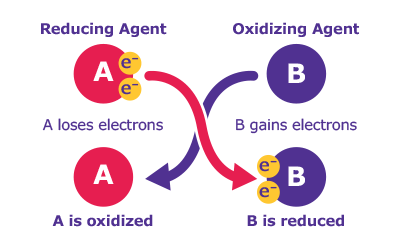Oxidation Reagents

Oxidation-reduction reactions are some of the most common transformations encountered in organic synthesis and are powerful tools for creating novel products. These reactions have manufacturing relevance in small molecule research. No matter what your oxidation-reduction reaction, we have the corresponding oxidation reagents to keep your work flowing.
Selected highlights are:
Baeyer–Villiger Oxidation
The Baeyer–Villiger (BV) oxidation method is the synthetic reaction that oxidizes a ketone to an ester or a cyclic ketone to a lactone. Modifications in 2004 by Brink, Arends, and Sheldon to the BV reaction have made it more sustainable by using hydrogen peroxide as the oxidant.
Dess–Martin Oxidation
Dess–Martin oxidation synthesizes aldehydes or ketones using Dess–Martin periodinane (DMP) as the oxidizing reagent. Due to the mild reaction conditions, it is one of the more preferable oxidation reactions.
Products
Related Resources
- Article: Oxidizing and Reducing Agents
Oxidation and reduction reactions are some of the most common transformations encountered in organic synthesis, and are some of the organic chemist’s most powerful tools for creating novel products.
Jones Oxidation
The Jones oxidation is a conversion of the primary alcohol into a carboxylic acid and a secondary alcohol into a ketone. Modifications to this reaction, such as Collins oxidation with the Collins reagent, are now prevalently used because of higher selectivity and milder conditions.
Kornblum Oxidation
The Kornblum oxidation method transforms an alkyl halide into an aldehyde using dimethyl sulfoxide (DSMO). As one of the first DSMO oxidations, it has been further developed with the Pfitzner–Moffatt oxidation, Swern oxidation, and others.
Ley–Griffith Oxidation
Ley–Griffith oxidation is the selective oxidation of an alcohol to an aldehyde or to a ketone that uses tetrapropylammonium perruthenate (known as the Ley–Griffith reagent or TPAP). TPAP is a soluble, nonvolatile, air-stable, mild oxidant which can be used either stoichiometrically or catalytically with a suitable co-oxidant.
Oppenauer Oxidation
With Oppenauer oxidation, a secondary alcohol is aluminum-catalyzed to form aldehydes or ketones. While this oxidation can also work for primary alcohols, Oppenauer oxidation is unique because it targets the secondary alcohol.
Pinnick Oxidation
The Pinnick oxidation reaction converts aldehydes into carboxylic acids, the second step of Jones oxidation. This reaction is run under mild conditions and doesn’t show functional group sensitivity.
Rubottom Oxidation
The Rubottom oxidation is the synthesis of a α-hydroxy ketone from a silyl enol ether. Buffer systems have been used in reaction modifications that reduce side reactions and improve stability.
Sharpless Asymmetric Epoxidation
The Sharpless epoxidation allows the enantioselective epoxidation of primary and secondary allylic alcohols to 2,3-epoxyalcohols using a titanium isopropoxide catalyst, t-butyl hydroperoxide (TBHP), and a chiral diethyl tartrate (DET). This method has become synthetically popular due to availability and low cost of the starting materials and the reliability and predictability of the reaction outcome. K. Barry Sharpless shared the 2001 Nobel Prize in chemistry for this work.
Wacker Oxidation
The Wacker oxidation method oxidizes a terminal alkene to a ketone using a palladium catalyst, oxygen, and a copper catalyst. Modified procedures have allowed more acid-sensitive functional groups to be oxidized.
There are hundreds of oxidizing agents at a chemist′s disposals. Depending on the demands of synthetic chemistry, one can always use a more specific, a more stable, a milder, or a stronger oxidant. We offer an extensive breadth of oxidizing agents, from common oxidants like permanganate and dichromate to milder oxidants like Chloramine-T, and Dess–Martin periodinane (DMP). We also list radical oxidizers such as TEMPO and Fremy′s salt. Find the oxidation reagent you need to keep your work flowing.
To continue reading please sign in or create an account.
Don't Have An Account?